The Music Machine | Mark Landon | Interview
The Music Machine with its ‘Talk Talk’ hit single and debut album ‘(Turn On) The Music Machine’ on Original Sound Records (December 31, 1966) are considered classics.
The band was fronted by their innovative songwriter and lead vocalist Sean Bonniwell. The Music Machine were rock rebels dressed in dark. Mark Landon on lead guitar shares an in-depth story about his career which involved his time with Ike & Tina Turner, as well as with so many other great artists. Sean Bonniwell sadly passed away soon after our interview from July 2011.
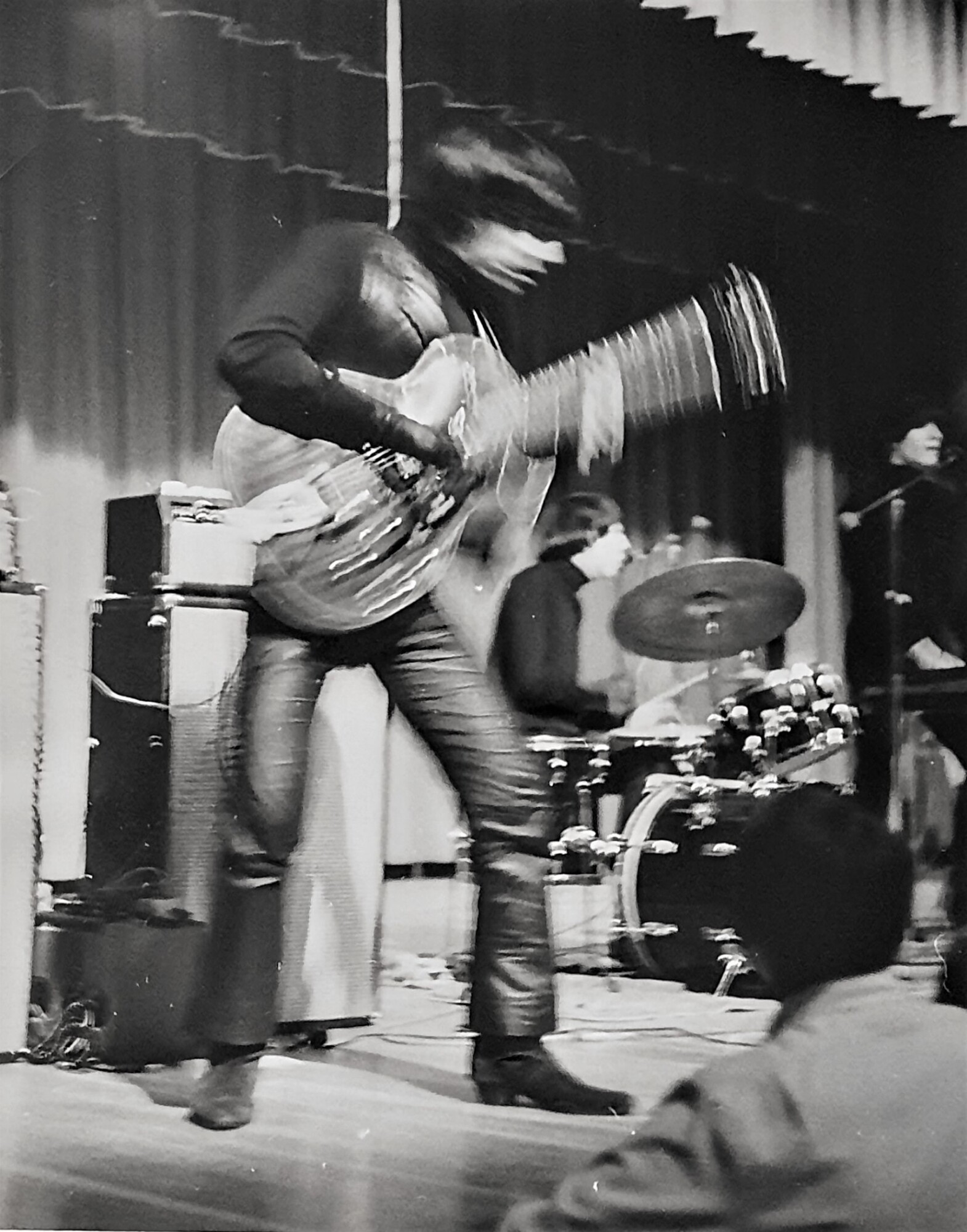
“We were dark, intensely dressed all in black”
Where and when did you grow up? Was music a big part of your family life? Did the local music scene influence you or inspire you to play music?
Mark Landon: My grandparents were Russian Jews who fled communism in 1920’s Russia and went across the border into China. China was not yet communist country at the time. I was born in a city called Tientsin, which is now Tianjin in China way back [laughs]. When WWII ended Mao Zedong took over communist party.
My parents were lucky to be able to flee to America in 1948. I had no siblings. I was about 18 months old when we came to the USA. First we arrived in Chicago where my dad’s older brother Leo lived. Then within a year or so we moved to Hollywood California. I have no memories of Chicago, when I was a toddler. I grew up like any other American kid in North Hollywood. I was so young when we immigrated, I have no memories of China at all. I was about 10 or 12 years old when we proudly became U.S. citizens.
Music and art have always been in my life. My father was an artist, singer, front man, guitarist, and violinist in a heavily European populated China. He played in a big band back in the 1930’s. My mom was a pharmacist and business woman. I grew up with all of my pop’s skills and none of my mom’s business sense, damn [laughs].
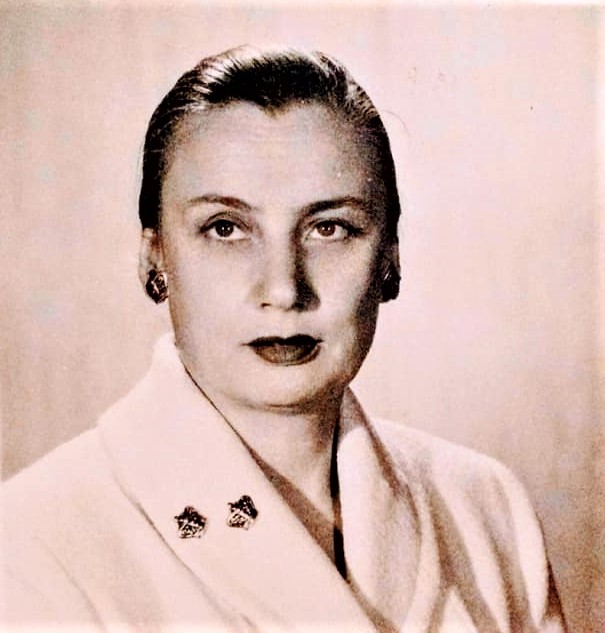
Funny, though I always loved music, from classical to swing to rock and blues. I had no real interest in playing till I was about 13 years old when, on vacation with my folks at Big Bear Lake, I saw an older band of teens playing surf music in the early 60’s. The longer the band played, the more dreamy eyed girls gathered by the stage. Though I tried to get noticed, the girls’ eyes never left the band, and that’s when it hit me: ELECTRIC GUITARS = BABES! Within a week I’d put a small deposit on an old “Harmony Hollywood” guitar at a local pawn shop. I paid it off mowing lawns and delivering newspapers. That’s how it started, but once my dad taught me a few easy chords, and I taught myself a few simple melodies, that’s when it bit me in the neck like a vampire.
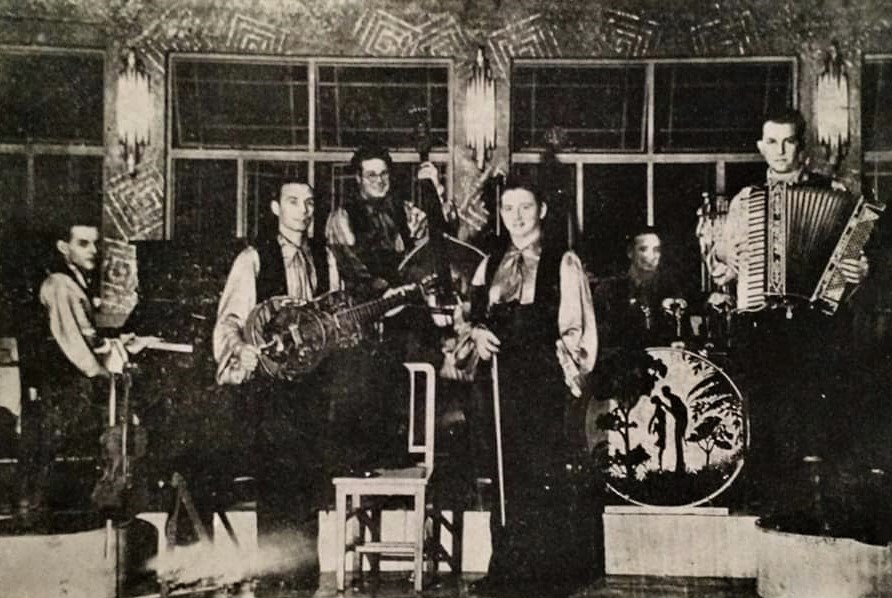
Are you related to Michael Landon, star of Bonanza?
I’m not related to actor Michael Landon. Michael Landon’s son, the oldest of his nine children who was also named Mark Landon was found dead in his Hollywood home in 2009, no cause of death was given.
Who were your major influences?
When I first started playing guitar, I was influenced more by individual songs than players, but some stood out in the 1950’s and early 60’s. You had Chuck Berry, Link Wray, Duane Eddy, Dick Dale, Travis Wammack, et cetera. Then in 1966 everything changed with the release of ‘Blues Breakers with Eric Clapton’ by John Mayall & the Bluesbreakers album, followed by ‘A Hard Road’ with Peter Green, and the third album with Mick Taylor. With these albums, I discovered “The Blues.” I’ve been playing my own style of blues since I left The Music Machine. From B.B. King, Buddy Guy, Albert King, Robert Johnson, Jimi Hendrix, Freddie King, T-Bone Walker, Albert Collins, Gary Moore, Alvin Lee, Jeff Beck, and many more.
What bands were you a member of prior to The Purple Gang?
My first real band was The Tegrams 4, started at North Hollywood High School by my pal Alan Wisdom. We were a surf band, we eventually morphed into The Purple Gang. I don’t remember who put us in touch with the new bandmates and the managers.
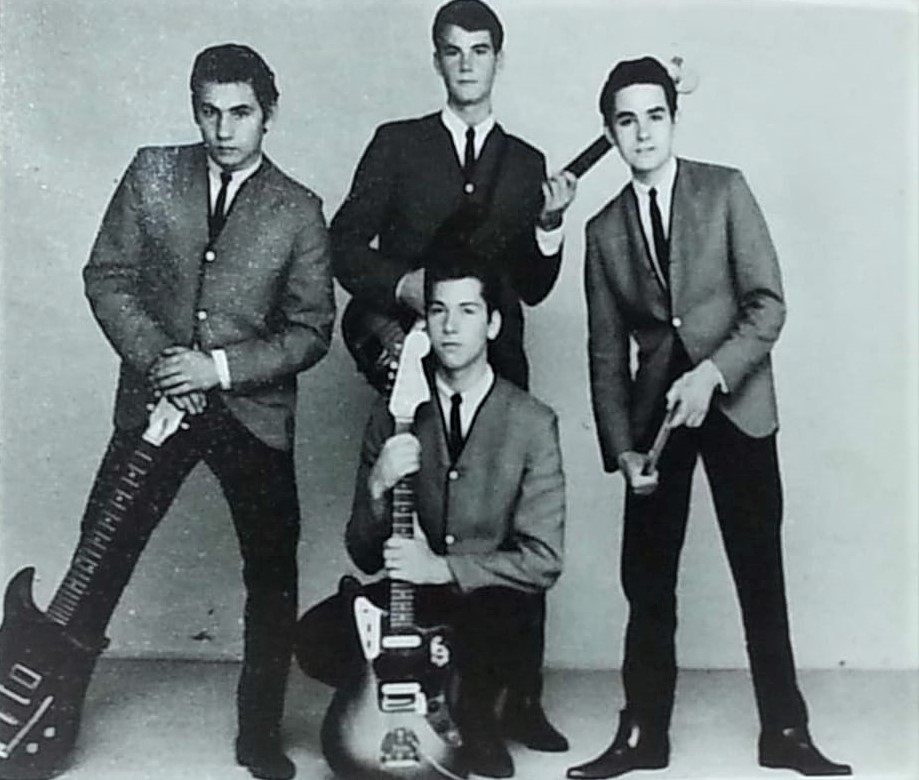
Would love to hear about how The Purple Gang and The Ragamuffins and how all got together.
In 1964 record promoters Tony and Rosemary Richland put our North Hollywood high school band, The Tegrams 4 together with Bob Corff and The Purple Gang was formed:
Bob Corff – vocals
Alan Wisdom – lead guitar
Harry Garfield – keyboards
Marty Tryon – bass
Tom Atwater – drums
Mark Landon – rhythm guitar
We signed with and released singles on both Jerden and MGM Records. My favorite song was our single ‘Bring Your Own Self Down,’ written for us by Tandyn Almer, who also wrote ‘Along Comes Mary’ for The Association. The Richlands kicked me out of the group in late 1965, I wasn’t pretty enough.
Bob Corff did much stage work including Broadway, and became a respected vocal coach. Harry Garfield went on to head Universal Studios Music Department. Alan Wisdom started his own telephone installation company. Marty Tryon played in multiple bands and worked with The Smothers Brothers for decades. No idea what happened to Tom Atwater. I joined The Ragamuffins in early ’66 and formed The Music Machine.
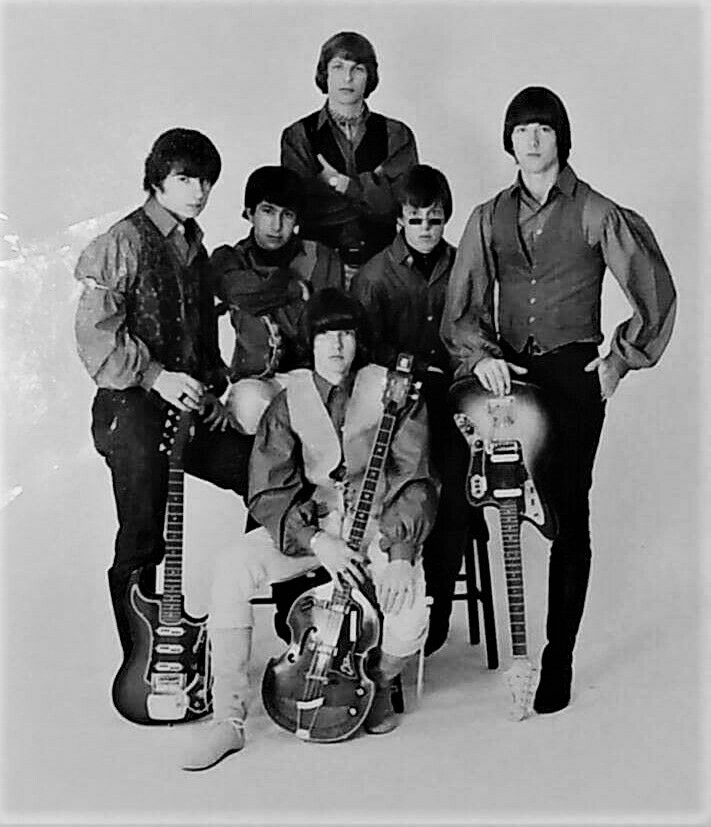
How did you originally met Sean Bonniwell?
After The Purple Gang, I was working at my favorite music store, the Adler Music Store on Victory Boulevard, in Van Nuys, CA. Was a fun, friendly family owned business run by Larry Adler. I worked there on weekends and summer vacations in high school. One day, bassist Keith Olsen came in, we jammed a little at the store and we hit it off. Keith asked me to come out to a little juke joint called The Casbah where his band The Ragamuffins were playing that night. That evening I met Sean Bonniwell, Doug Rhodes, and Ron Edgar. I was impressed! They were older than I and more experienced, again we hit it off.
Can you elaborate the formation of the Music Machine? You joined them a bit later.
Sean Bonniwell told me their lead guitarist was leaving the band and he asked me to come to a rehearsal and jam with them. I did, it felt great, and Sean asked me to join the band as lead guitarist, and I jumped at the chance. Soon we added keyboardist Doug Rhodes whom they already knew, and we were complete.
Ron Edgar and Doug Rhodes lived in Hollywood, Keith Olson and I lived in North Hollywood/Studio City, but Sean lived 40 miles away in San Pedro. We traveled to San Pedro several days a week to rehearse in Sean’s garage. It was a pain, but worth it as we started to work out original material, and forge the sound, image and direction of what would soon become The Music Machine. Sean constantly wrote songs, just playing chords on guitar, we would all work out the parts and arrangements.
When and where did Music Machine play their first gigs? Do you remember the first song the band played? How was the band accepted by the audience?
Our first gigs were at little juke joints all over Los Angeles. We were rockin’ and chasin’ girls and fine tuning our sound and look and performance skills.
I can’t really remember what the first song was.
The audiences dug us, mostly, I think, because we looked and sounded so different from what they were used to seeing in clubs. Even the covers we did were arranged differently so they wouldn’t sound like the usual club bands.
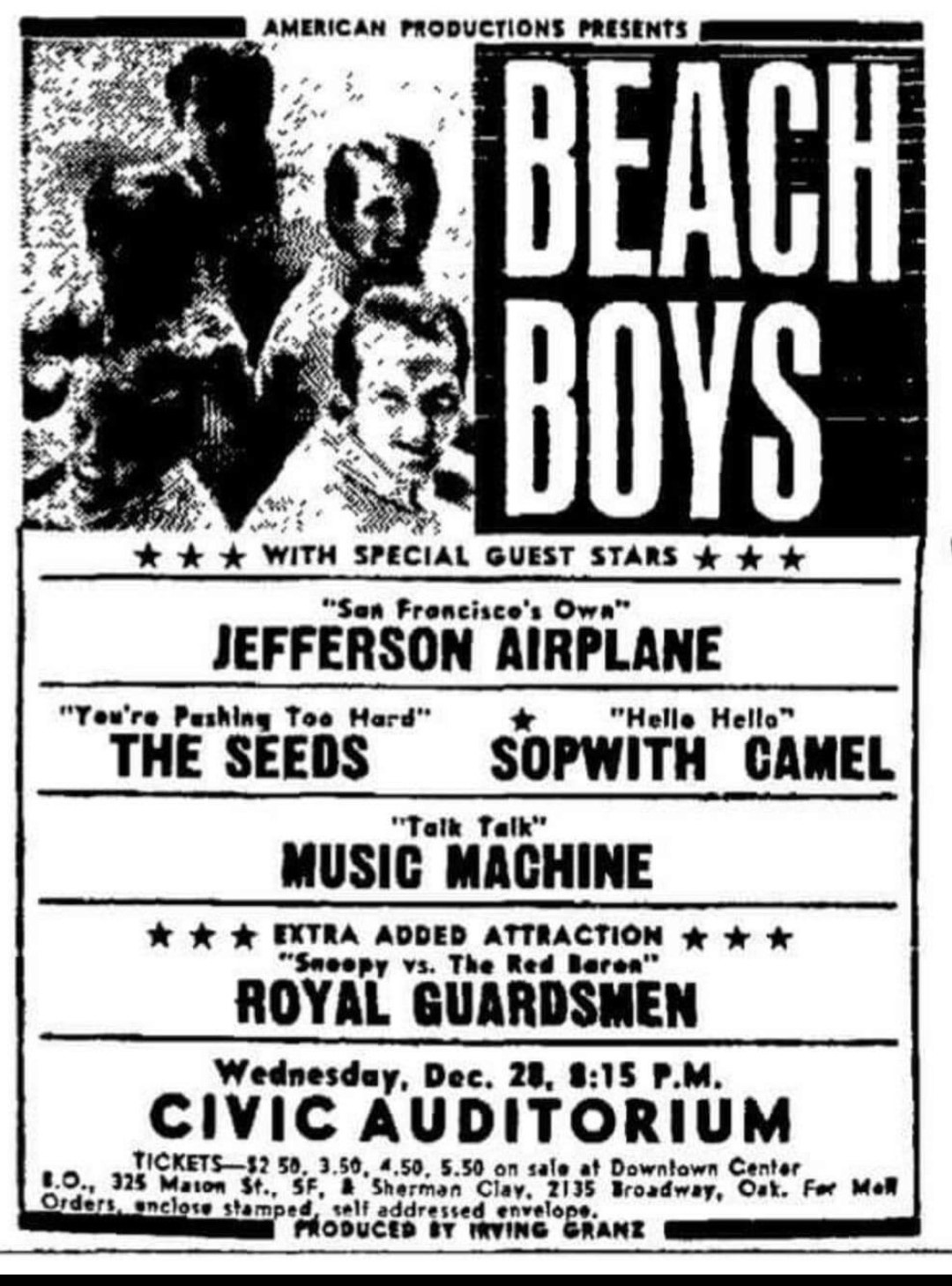
What sort of venues did you play on?
Doug, Ron, and I moved into a tiny apartment in an old brick building above a pawn shop on Santa Monica Boulevard in Hollywood. Since the guys were older than me, I was growing up fast. Since I was only 19, I had to fib about my age to get a driver’s license under my new stage name “Mark Landon”, and showing my age as 22 in order to play in nightclubs serving booze [laughs].
“The gloved hand represented the group, the bare hand represented the individual”
What influenced the band’s sound?
We were living in an age of “love-ins,” psychedelics everywhere, peace & love, barefoot hippies, Nehru jackets, brightly colored tie-dyed clothes. A whole generation fueled by a drug induced haze. The Music Machine was the complete opposite. We didn’t sing about love and “flower power.” We were dark, intensely dressed all in black, our hair dyed black, and of course we all wore one black glove. We wore gloves 24/7 in public. The gloved hand represented the group, the bare hand represented the individual.
Our music spanned from aggressiveness through tortured self-doubt, and every emotion between. Except for me, the rest of the group was rooted in the folk music revival of the early 1960’s. I started out by playing surf music. Psychedelia meant nothing to us though we added a hint of it occasionally for fun and to stay relevant.
Sean Bonniwell was really a poet, constantly writing songs. Sean, Keith, Ron, and Doug all came up through folk music, and for Ron and Doug even a little touch of jazz, this gave our songs a completely different perspective both lyrically and musically, a lot of minor chords with different progressions as well as much more introspective self loathing. We’d planned the album to be all original songs, but when ‘Talk Talk’ hit so quickly, our record label demanded an album immediately and since we were on the road constantly trying to earn a living, we were not yet ready. Our label insisted we add a few covers to speed things up, which was the last thing we wanted to do, but we had no choice. We came in from touring, in Colorado I think, went straight to the original sound recording studio on Sunset near La Brea, when we hit the road again a week later, the album was done.
We also tuned down a step and a half to D flat in order to achieve a much more throaty guitar tone. Our songs weren’t about dope and “flower power,” they were about real feelings and emotions, about the brashness, insecurity and the self loathing and pain of youthful love and dreams unfulfilled, about reaching for the dream against all odds, about getting knocked down and standing back up again, about life.
What are some of the most important players that influenced your own style and what in particular did they employ in their playing that you liked?
My personal influences as a guitarist were the blues players I mentioned earlier, but that style didn’t fit the contemporary, even avant-garde music we were playing, so none of that style came into play. I simply tried to learn and improve every day, and most importantly to be creative, original, and unique in a dark, powerful way that was appropriate for the time. I did not copy anyone else’s style, rather I would absorb bits and pieces of songs and tones that I liked, and store them in my head for future reference.
How did you get signed to Original Sound Records?
We were playing that night at the lounge of the Hollywood Legion Lane bowling alley between Sunset Boulevard and Hollywood Boulevard. Brian Ross, the record producer, was bowling with his family and he came into the lounge afterwards. He signed us the next day. After we’d recorded the single, our producer Brian Ross put together a seven year exclusive contract with Original Sound Records, which was owned by famous DJ, Art Laboe, who coined the term “oldies but goodies.” The label was managed by our future manager Gene Simmons (not Kiss’ Gene Simmons).
Did the size of audiences increase following the release of ‘Talk Talk’?
When ‘Talk Talk’ hit, I thought we’d made it, that the cash would come rolling in. We were working harder than ever, but we got nothing in return but a splash of fame. I had nothing to show for it but pride. I was still driving old cars and living in cheap motels. The only thing I had a lot of was pretty girls, they kinda came with the territory.
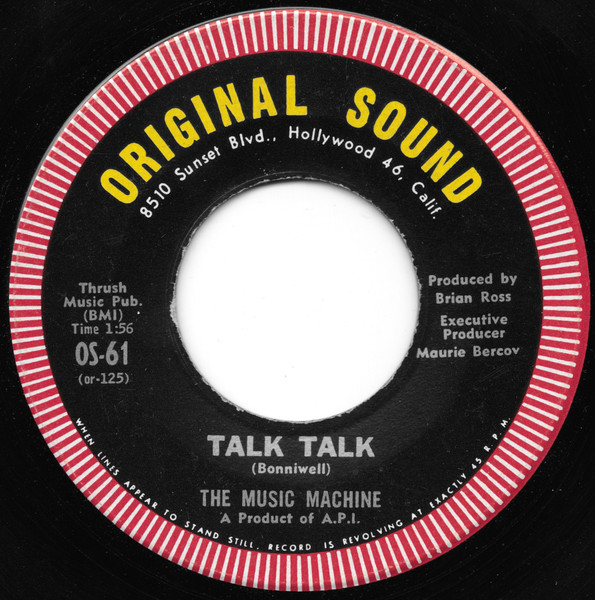
Where did you record it?
On July 30, 1966, we recorded ‘Talk Talk’ and ‘Come On In’ at the RCA Recording Studio-C across from the Cinerama Dome on the Sunset Strip. The Monkees had just finished a session at the studio. Sean Bonniwell well who wrote all of our original songs had come up with ‘Talk Talk’ and we all worked out the arrangement and all of our parts, it was badass and we knew it. We purposely kept it under two minutes to ensure DJ’s could squeeze us in just before going to a commercial break. We recorded both songs in one long day. Brian Ross produced it. Art Laboe had signed us to his original sound record label, and released ‘Talk Talk’ and ‘Come On In,’ when the single hit, we were on the road playin’ juke joints in Colorado, I think. They wanted an album immediately. We came back to Los Angeles, and went right into the original sound recording studio on the Sunset Strip in Hollywood. We were given no time to work out more original songs. We’d been playing on the road, no roadies, no airplanes, we drove ourselves from town to town, staying in cheap motels, there was no time to create new music. Because of this, Original Sound insisted that we include a few cover songs to save time and get the album out sooner, we were stridently opposed to this, but had no choice. We had intended for our first album to be all original. Our engineer Paul Buff was brilliant. In an era when 4-track recorders were common and 8-tracks had just come out. Paul synced two 4-tracks and one 2-track together so we had essentially a 10-track recording setup, amazing for 1966. We basically lived at the Original Sound Recording Studio for a week and then went right back out on the road.
Please share your recollections of the sessions. What were the influences and inspirations for the songs recorded?
‘Talk Talk’ and ‘Come On In’ were recorded at the R.C.A. Recording Studios on Sunset Blvd., in Hollywood. We rehearsed well, we couldn’t afford to waste time in the studio. We were excited to do it. It was a very famous studio, and we wanted a recording contract. We were ready, Keith Olsen was also an engineer so we knew we’d get the sound we’d worked so hard to create and fine tune. The mood at the Original Sound Studio sessions were different, we were exhausted, under time restraints, which led to us having to do some covers which was the last thing we wanted.
Again, as far as influences, we tried so hard to be original, our sound, our style, our songs. We were influenced more by our desire to be unique, and by the social mood of the times, than by any group or artist. We did what we could with the covers, but honestly, they were chosen by Original Sound for business reasons and didn’t matter to us at all, we tried to have fun with them. We eventually did record more originals, but they weren’t released till after the original Music Machine broke up. Sean reformed as the Bonniwell“Music Machine, by then The Purple Gang had disbanded after releasing several singles. I connected my old band mates Alan Wisdom and Harry Garfield with Sean. Unfortunately, the original Music Machine tracks were added to tracks the Bonniwell Music Machine recorded, and all were released as the ‘Bonniwell Music Machine,’ this confused many to this day as many assumed that all tracks on that album were recorded by the second group when in fact half the album was actually recorded by the original Music Machine.
Would you share your insight on the debut albums’ tracks?
To us, the original songs Sean wrote were special, the whole group crafted them into rock ‘n’r roll magic. The covers we were made to record were just filler. ‘Talk Talk’ was racing up the charts and Original Sound wanted an album instantly, to make that happen they had us record these covers: ‘Cherry, Cherry’ (Neil Diamond), ‘Taxman’ (George Harrison), ‘See See Rider’ (Ma Rainey, Lena Arant), ’96 Tears’ (Rudy Martinez) and ‘Hey Joe’ (Billy Roberts).
We tried to arrange these tunes so they didn’t sound like the popular versions people were familiar with. They were fun songs, but they meant nothing to us. We wanted our debut album to be all original. Our original material was very different. Sean wrote lyrics which mirrored the teenage angst, apprehension, dread, guilt, insecurity, and rebellion of our generation. The chord patterns were simple, the band would sit down and spend many hours adding, subtracting, changing, fine tuning, making the songs powerful and meaningful. At the end of the day, we’d go home exhausted, and overnight we’d come up with new ideas. The next day we’d all drive 40 miles from Hollywood to Sean’s house in San Pedro to rehearse and begin all over again.
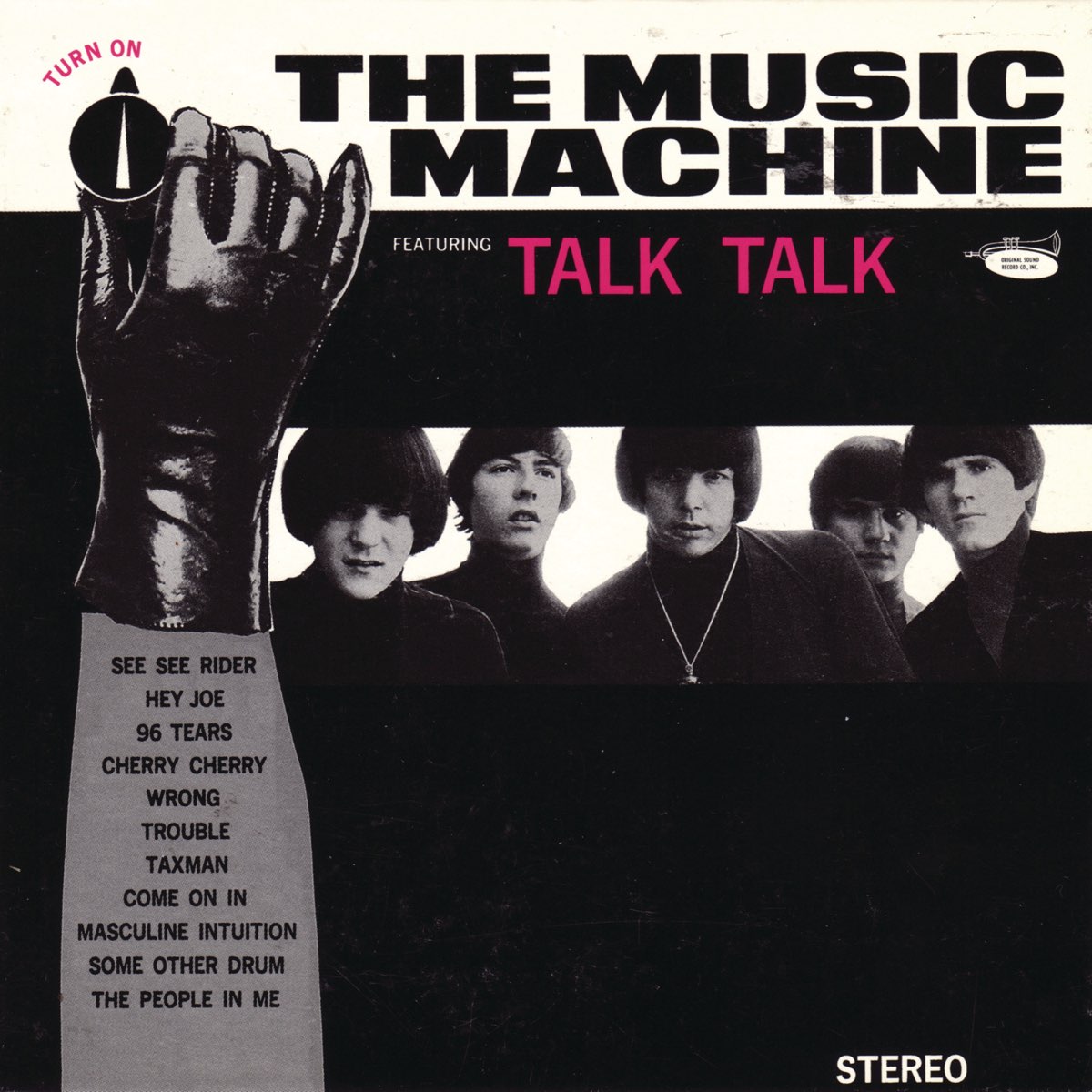
Do you remember the first time you heard ‘Talk Talk’ on the radio?
It was a time in Hollywood when hippies would hitchhike all over. I was driving down Sunset and picked up two girls and a guy. All of a sudden ‘Talk Talk’ comes on the radio! I was shocked, I turned up the volume loud. I was 20 years old, and had been dreaming, working and sacrificing for this moment since I was 13. My first words were: “It’s about time!”
Were you inspired by psychoactive substances like LSD at the time of writing the album?
In the 1960’s Hollywood psychedelic drugs were all the rage, but being fuzzy headed and lazy was not who we were. The Music Machine was very focused. We had a mission. We wanted to stand out both as musicians, songwriters, performers, social philosophers, we wanted to be unique, special, to stand out from the hippie crowd.
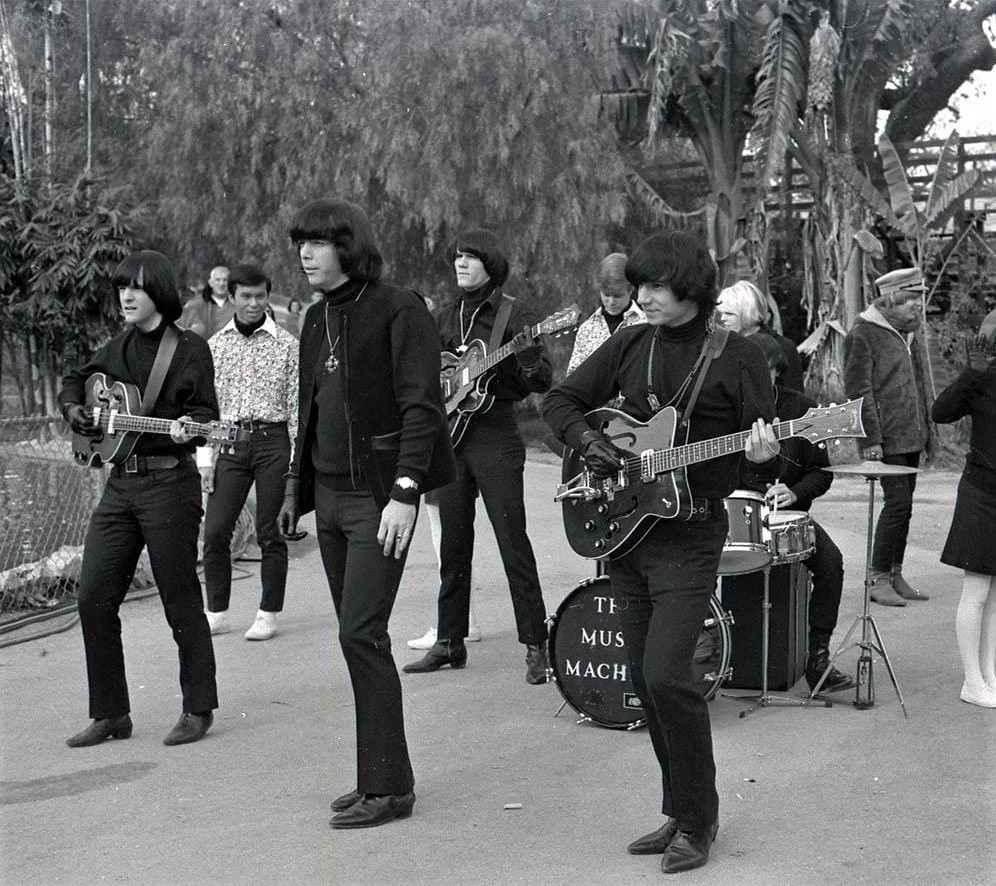
Did the band tour to support the LP?
We also wanted to be financially successful! We worked hard, toured constantly, rehearsed, recorded, we had no roadies, did everything ourselves. We simply had no time to sit around getting high on drugs.
How did you get signed to Warner Brothers?
I don’t know what happened to Brian Ross and Sean’s relationship with Art Laboe and Original Sound. Warner Bros came into play after the original Music Machine broke up. By the time all that happened I’d gone off to play and sing the blues.
How would you compare your debut album to the second album, ‘The Bonniwell Music Machine’?
The Bonniwell Music Machine was a completely different band than the original Music Machine. The black gloves disappeared, they wore regular clothes, the badass image vanished. The original Music Machine recorded several tracks which were never released and were added to the ‘Bonniwell Music Machine’ album. The Bonniwell Music Machine singles ‘Double Yellow Line,’ and ‘The Eagle Never Hunts the Fly’ were both recorded by the original group, and were on the first album. The tracks on the ‘Bonniwell Music Machine’ album recorded by the original Music Machine were: ‘Astrologically Incompatible,’ ‘Double Yellow Line,’ ‘Absolutely Positively,’ ‘Somethin Hurtin on Me,’ Bottom of the Soul,’ ‘The Eagle Never Hunts the Fly,’ ‘I’ve Loved You’.
Putting tracks cut by the original Music Machine on their album was wrong and confusing. The Bonniwell Music Machine was a good band, but it was very different. I recommended two of my old Purple Gang band mates Alan Wisdom and Harry Garfield to Sean as replacements for us.
These were the only songs on that list recorded by the original Music Machine, if memory serves, the other tunes were recorded by the Bonniwell Music Machine. As I recall, we recorded most of the tracks after the first single at Original Sound, but we also cut some tracks at Cossimo Matassa’s, J & M Recording Studio near the French Quarter in New Orleans, where many early rock ‘n’ roll and R&B hits were recorded for Fats Domino, Little Richard, Ray Charles, Jimmy Clanton, and many more, wish I could remember which tunes we did there, but I can’t.
What kind of gear, amps, effects, pedals did you have in the band?
In order to get a different, throatier sound, we tuned down to D flat and used heavier gauge guitar strings to compensate. The only fuzz tone available when we started was the Gibson Maestro (think The Rolling Stones: ‘Satisfaction’). To get our own sound, our bassist Keith Olsen, who was also an engineer, built two custom made fuzz tones, one for me and one for himself. On the early recordings I used my Fender Telecaster and a Fender Twin Reverb amp. I also used a Guild Starfire guitar on some of the later sessions, don’t remember which ones. Back in those days we basically used our stage equipment in the studio. At one point we signed an endorsement deal with Vox. Vox made black guitars for us and Super Beetle amps with JBL speakers, we tried them a few times but they just didn’t fit our sound, with few exceptions, we hardly if ever used the stuff.
How pleased was the band with the sound of the album? What, if anything, would you like to have been different from the finished product?
This is a tough question to answer. The original record’s been in constant release around the world, and has been re-mastered so many times. I still like the original “mono” version.
The two things I’d change are:
1: No covers, all original.
2: I’d insist on actually making a buck or two from having a hit record and constantly touring to promote it.
Was there a certain concept behind the album?
Sean Bonniwell was such a great songwriter, the band’s idea was an album of entirely original material with a unique hard-edged sound and look.
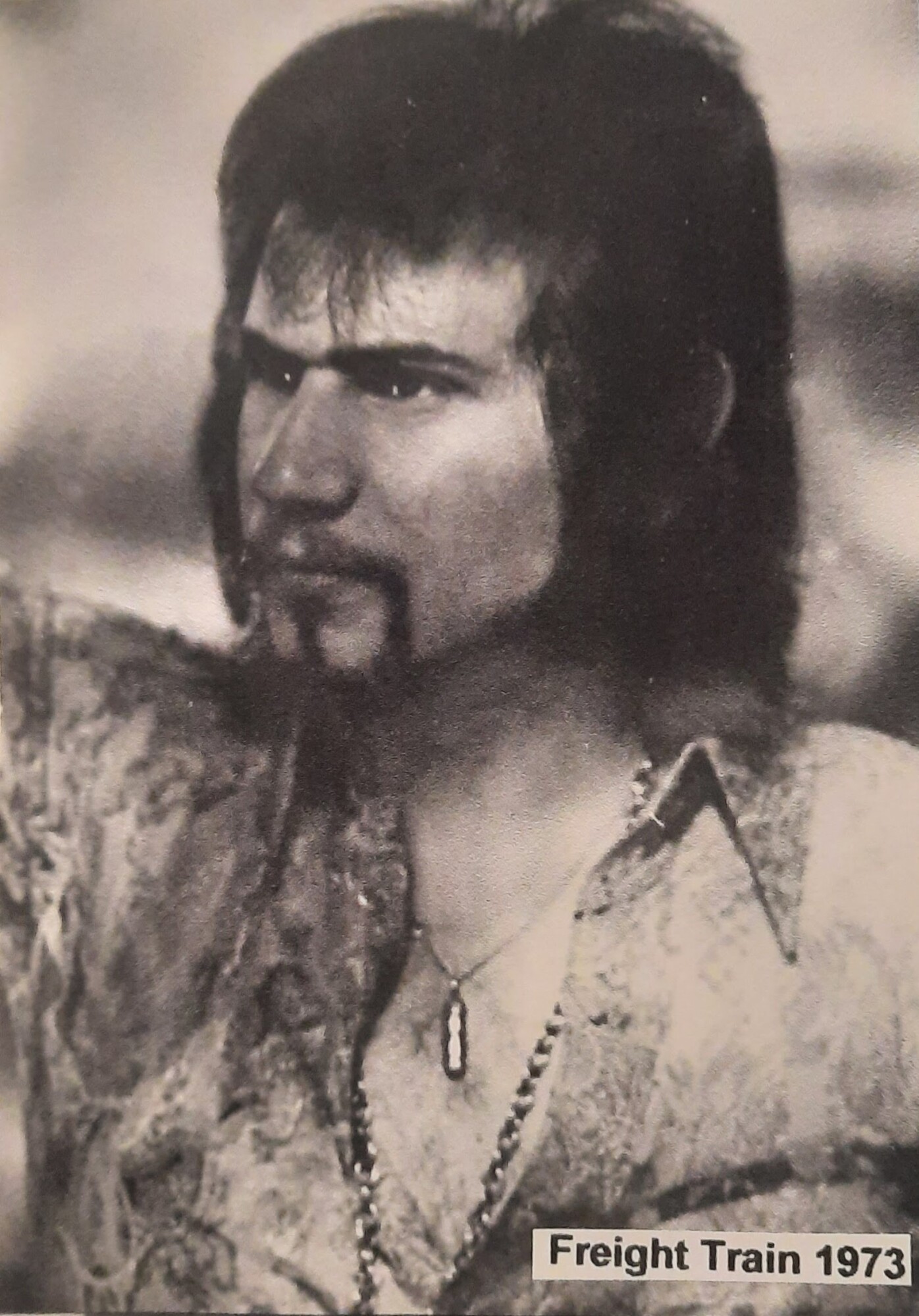
What happened after the band stopped?
By the time I left The Music Machine all I wanted to do was lead my own blues/rock band, I met a blues bassist, John Leland and we started jamming together. I got a call from Gene Simmons inviting me to a recording session for Ike & Tina Turner. I met them, as well as Albert Collins. Ike asked me to come up to their home and jam, I asked him if I could bring my bass player John and Ike said yes. I also had a band called Freight Train.
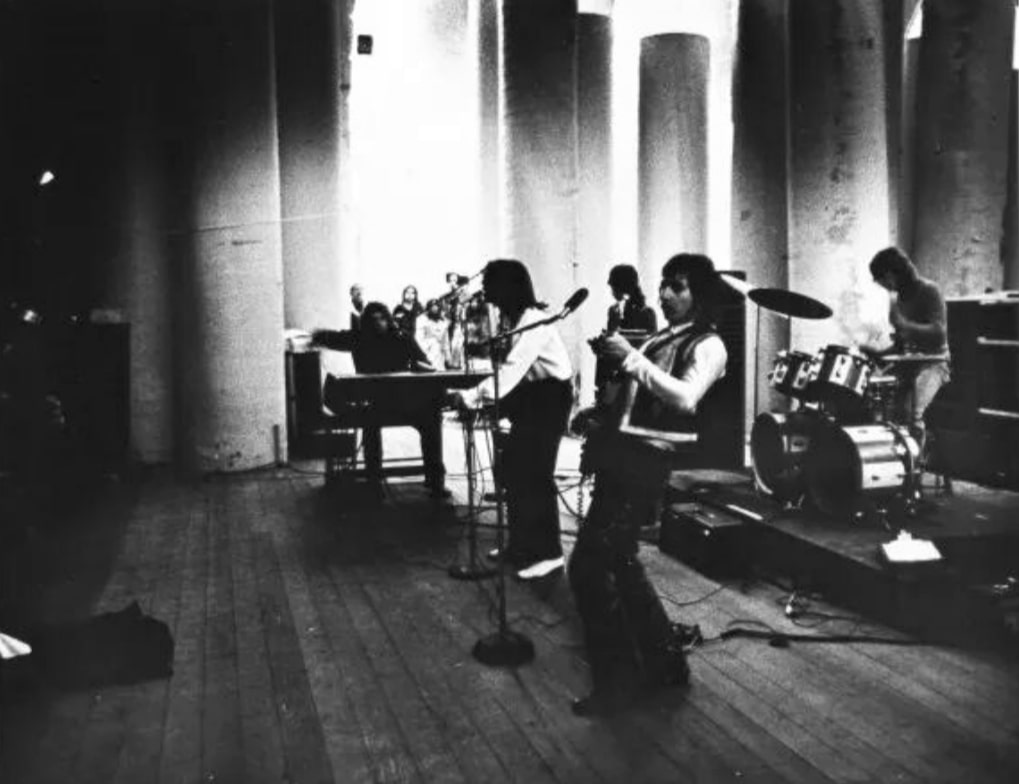
I was out of touch with Music Machine members for many years, then around 2008 we began to reconnect, this coming from the constant stream of vinyl and CD re-releases and compilations. Keith Olsen, Ron Edgar and myself came together for a record show and autograph signing at the Beverly Garland Hotel in Studio City, California. Sean had planned to be there, but raging fires in central California caused the highways to be closed and he was not able to drive down. Doug Rhodes didn’t make it either. When Sean passed away in 2011 we all met up in Visalia to say a few words at his funeral. The Music Machine members stayed in touch till both Keith Olsen and Ron Edgar passed away, Doug and I are still in touch.
Sean Bonniwell continued to write songs till he passed away in 2011. Ron Edgar continued to play drums his entire life till he died in 2015. Keith Olsen went on to become a Hall of Fame record producer, creating many gold, platinum, and multi-platinum albums. I changed careers and became a multi-Emmy winning Hollywood film and TV makeup artist for over 35 years. I retired in 2013 and moved from Hollywood to Austin, Texas to play the blues. I spent my time today performing and recording.
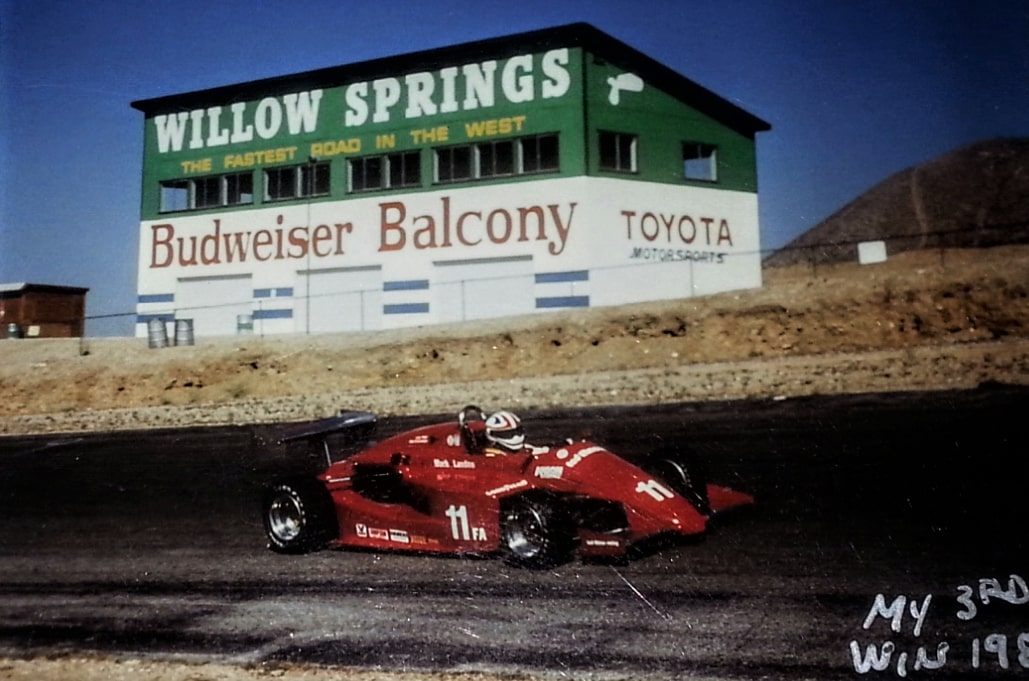
“Tina Turner and her sister cooked up a big pot of gumbo, and we had a ball”
You played guitar for Ike and Tina Turner. How did that come about? How long did you play with them?
John Leland and I went up to Ike & Tina Turner’s house and jammed for hours. We had fun. Tina Turner and her sister cooked up a big pot of gumbo, and we had a ball. Ike called me later and asked me to come play guitar with the band, I asked him about John and he agreed to hire us both.
I played with Ike & Tina Turner’ from roughly 1969 – 71, I learned a lot about life.
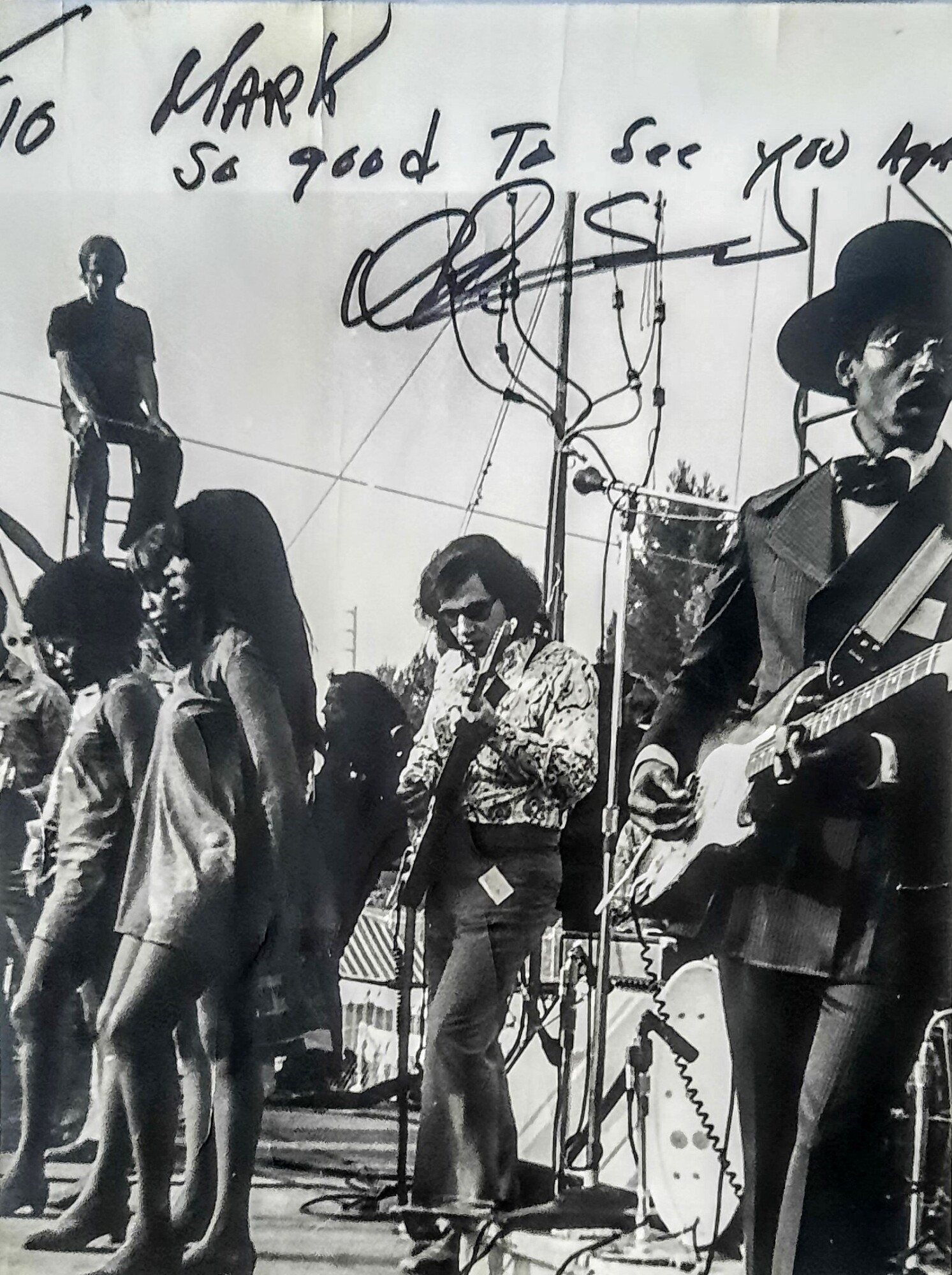
Looking back, what was the highlight of your time in the band? Which songs are you most proud of? Where and when was your most memorable gig?
With the Music Machine there were many highlights, if I had to pick a magic moment it would be the night we played our first actual concert, on the bill with many rock and pop stars of the day, at a real concert hall, the Santa Monica Civic Auditorium, it was the first of many, and it was magical. I was scared to death.
With Ike & Tina Turner one special weekend in California was the three day Newport ’69 Festival, a huge concert sharing the bill with everyone from Jimi Hendrix Experience and Joe Cocker, to Taj Mahal and Albert King and so many more. There were so many more magical moments, but these two always come to mind.
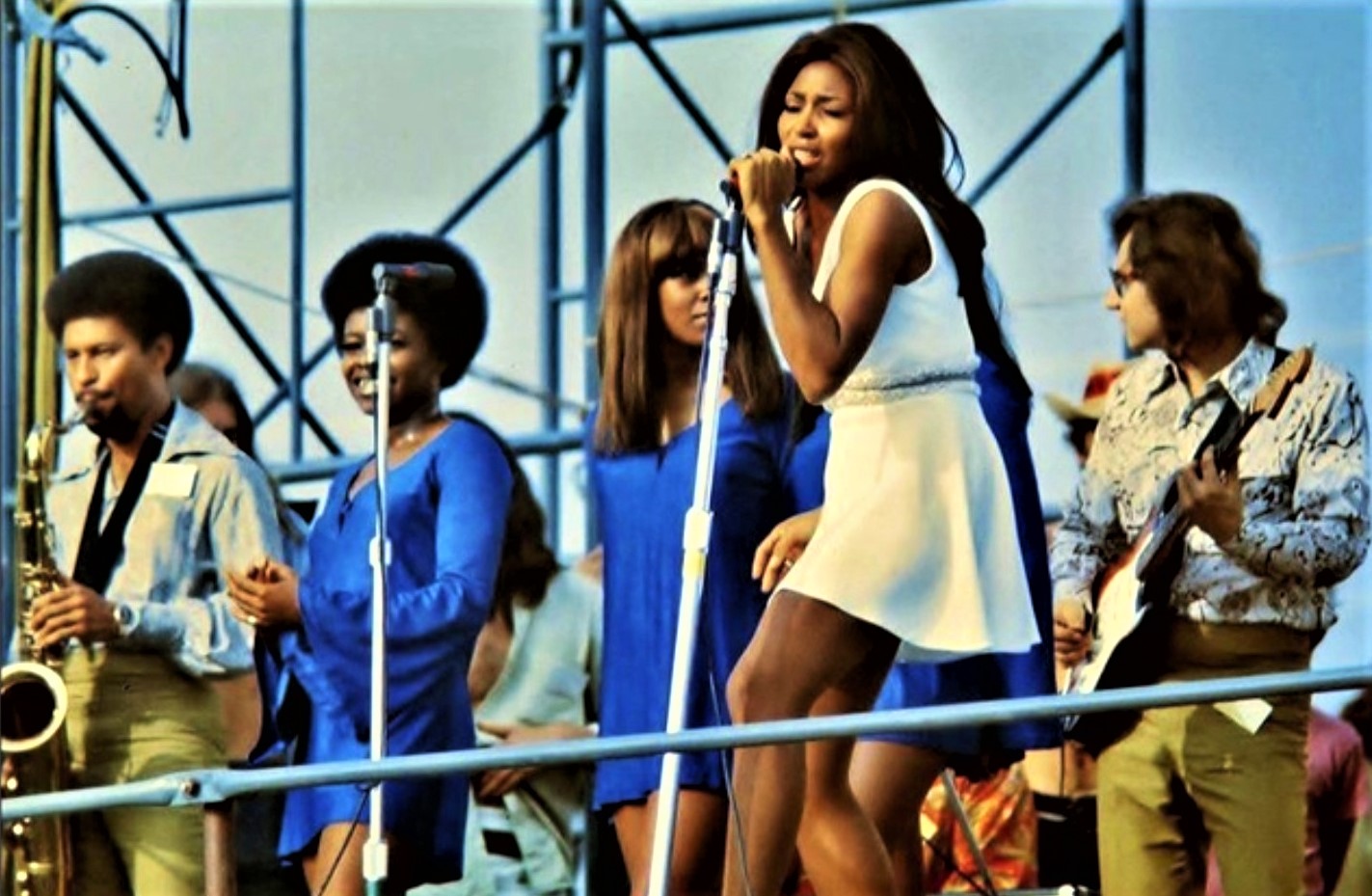
I’m very proud of ‘Absolutely Positively,’ ‘The People in Me,’ and of course, ‘Talk Talk’.
What are some of your favorite memories from the Music Machine and the 60s in general?
For me, the Music Machine was a huge learning experience, having the rest of the band being from 1 to 5 years older made me grow up a little quicker. Sean taught me many things, both good and bad, right and wrong about being a band leader. Other more fun memories were guest-starring on TV shows like American Bandstand, SheBang, Where the Action Is, Hullabaloo, et cetera.
The 60’s were a time of social and cultural rebellion, known as “Counter Culture,” on one hand, peace and love for all, on the other hand the discovery that teens could demonstrate and make their voices heard regarding the Vietnam War, racial segregation, feminism, men grew long hair and beards. Girls wore miniskirts and bare midriffs, the conservative social mores of the 1950’s were gone, free love and social rebellion were the new way. Musically, the British Invasion of the early 1960’s opened the door to more music style choices than ever. It was British blues artists that awakened me to electric blues, John Mayall, Eric Clapton, Peter Green, Mick Taylor, Eric Burdon, et cetera. These and others changed my post-Music Machine musical direction forever.
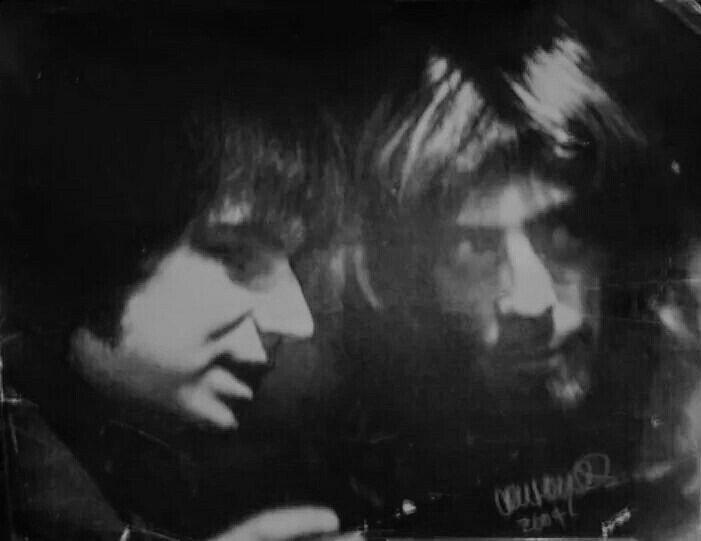
What were some of your favourite bands?
From that 60’s era, the bands, I had so many faves from pop in the early 60’s: The Beatles, The Rolling Stones, The Animals, The Yardbirds, shifting to bluesier sounds of John Mayall & the Bluesbreakers, Peter Green’s Fleetwood Mac, The Zombies, B.B. King, Freddie King, Albert King, Bobby Blue Bland, and many others. For me with pop groups it was more about the song and performance more than just following individual groups.
Is there any unreleased material?
I believe most of the material, including outtakes, et cetera everything has been released, over and over on countless labels around the world.
You’re still very active. What currently occupies your life?
I’m still very busy, writing songs, recording, and rockin’ the blues. I also still do work on an occasional feature film including Will Smith’s film Emancipation which we shot last year outside New Orleans.
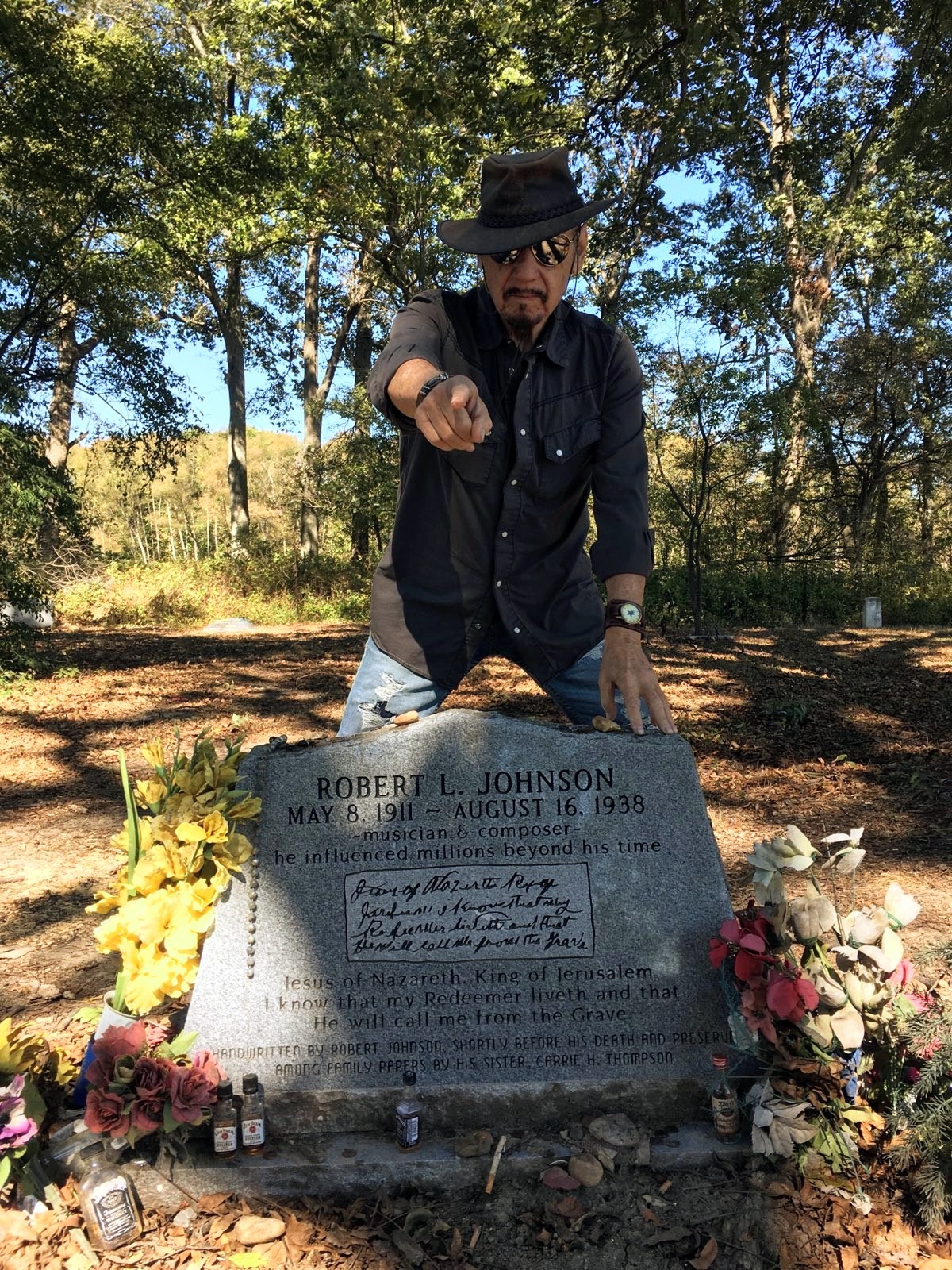
Thank you for taking your time. Last word is yours.
I’ve been very blessed. I’m kinda like an old rat rod, old and beat up, but so far everything that’s broken, they’ve been able to fix so I can still rumble down the road. For the most part, I feel just like the same fool I was at 19. I still love the same music, the same cars, the same girls, I feel like I’m the same idiot I was, until I walk by a mirror and see a wrinkled up, bald old geezer staring back at me. Landon’s Law #22: “It ain’t over till it’s over.” Thank you for remembering.
Klemen Breznikar
Headline photo: Trade ad for The Music Machine’s single ‘The People in Me’ | Original Sound Records – Billboard, page 1, 28 January 1967
All photos from Mark Landon private archive | All photo materials are copyrighted by their respective copyright owners, and are subject to use for INFORMATIONAL PURPOSES ONLY!
The Music Machine | Interview | Sean Bonniwell

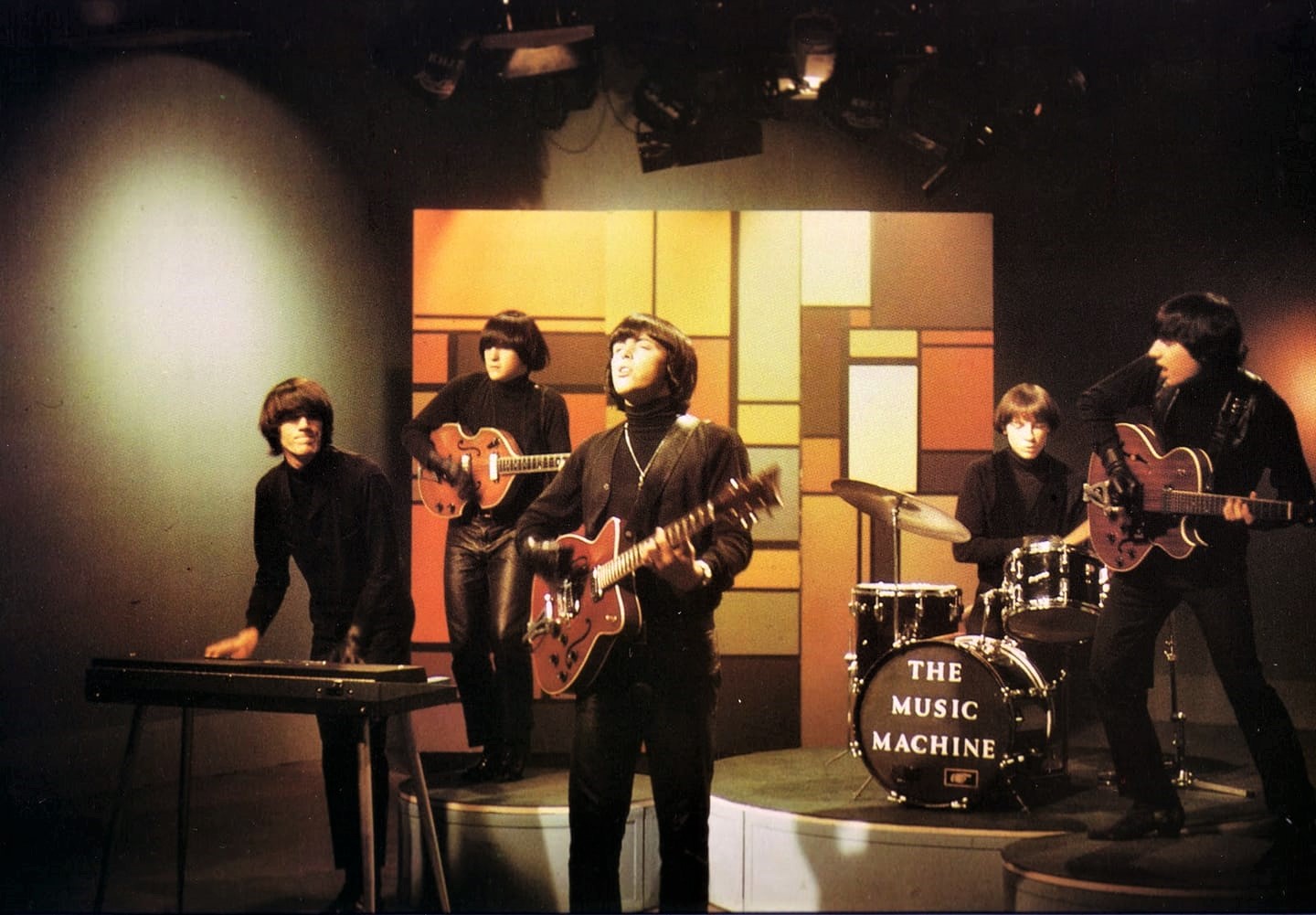



Great article. I remember being a kid in a garage band playing with a black glove in admiration of the Music Machine and their great songs “Talk Talk” and “Masculine Intuition”. Thanks for your story, Mark.
Nice interview, Mark Landon’s memories and images from that great time are good to see. It’s a treat to have one of the standout Nuggets bands featured here. “Talk Talk” is one of the best Garage Rock songs.